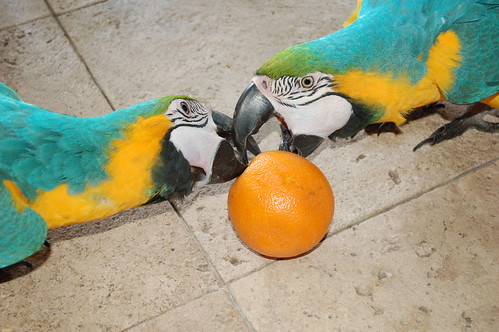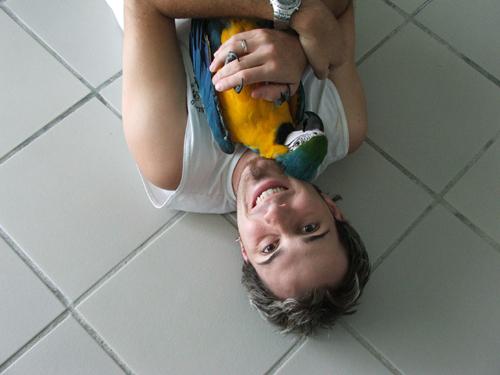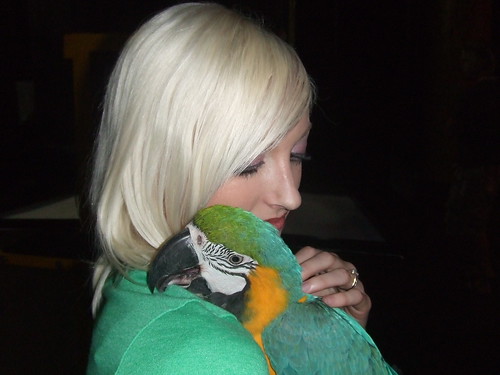Facts About Blue And Gold Macaws You
Must Know Before Purchasing
What do you know about birds? You may be a beginner or you may have quite a lot of experience with birds, however if you have any knowledge at all about birds (even in very general terms) you know that there is a big difference among the great variety of birds our world is fortunate enough to be blessed with.
It’s not the same to have a parakeet or a parrot, a finch or a macaw, and size isn’t the only difference I’m talking about.
If you are considering a Blue and Gold Macaw, here are some blue gold macaw facts and added tid bits you should be aware of.
Some Blue Gold Macaw Facts:
Physical Characteristics of the Blue and Gold Macaw
1. The Blue Gold Macaw is large (approximately 33 inches from head to tail), with a head, back, and wings in a blue-green color, and frontal body plumage in yellow. The Blue and Gold has a whitish skin face mask.

- Blue Gold Macaws can be trained to talk, but are not good at mimicking.
- They need lots of space given their large size to move around and exercise. Their wing span is approximately three and a half feet.
2. More blue gold macaw facts: TheSexing of a Blue and Gold Macaw As with most birds, sexing is difficult and usually requires some DNA testing, however without being a sure thing, the hen may have a slimmer head
- They have the average lifespan of most macaws, which is anywhere between 30 to 50 years.
- They can be aggressive and tend to pluck, although they are said to be excellent pets for macaw fans around the world.
A few more blue gold macaw facts:
The Origin of the Blue and Gold Macaw
- Central America to South America

- The scientific name of the blue and gold macaw is Ara ararauna.
- It can be very loud as most macaws can
Additional blue gold macaw facts:
Breeding of the blue gold macaw
- They breed readily in captivity and they are increasingly popular in the pet trade
Approx Breeding Age- As young as three years. When the bird reaches sexual maturity you will need to watch aggression level during mating season in early spring. (usually lasts 6 weeks)
- Can breed as young as three years of age
- At sexual maturity it is important to watch out for aggression in the blue gold macaw
- Mating season, which is usually in early spring lasts approximately six weeks
Consider these blue gold macaw facts:
Blue and Gold macaw behavior

- They can inflict serious bites
- They do not make good dorm or apartment pet
- Very noisy
- Very messy as most large (and small) birds are.
- They need training and those cases with best results are the ones where a chick or young bird was brought to the home, trained, and adapted to family living.
Other blue gold macaw facts:
You should consider getting a strong and sturdy play stand of a pretty good size for your macaw to play on
Toys should be strong, and chances are he will destroy them no matter what you buy. Wooden toys seem to work best.
A couple more blue gold macaw facts:
Cost is approximately eight hundred to two thousand dollars.
They talk, are playful, and beautiful birds
If these aren’t enough blue gold macaw facts for you, check out our complete blue and gold macaw fact sheet, but whatever you do, make sure you are prepared for this great commitment which involves not only having the right home, equipment, and knowledge, but considering the long life these animals live you must make proper arrangements for others to care for when you can no longer do so.
http://budgerigarunivers.blogspot.com/
http://budgerigarunivers.blogspot.com/
No comments:
Post a Comment